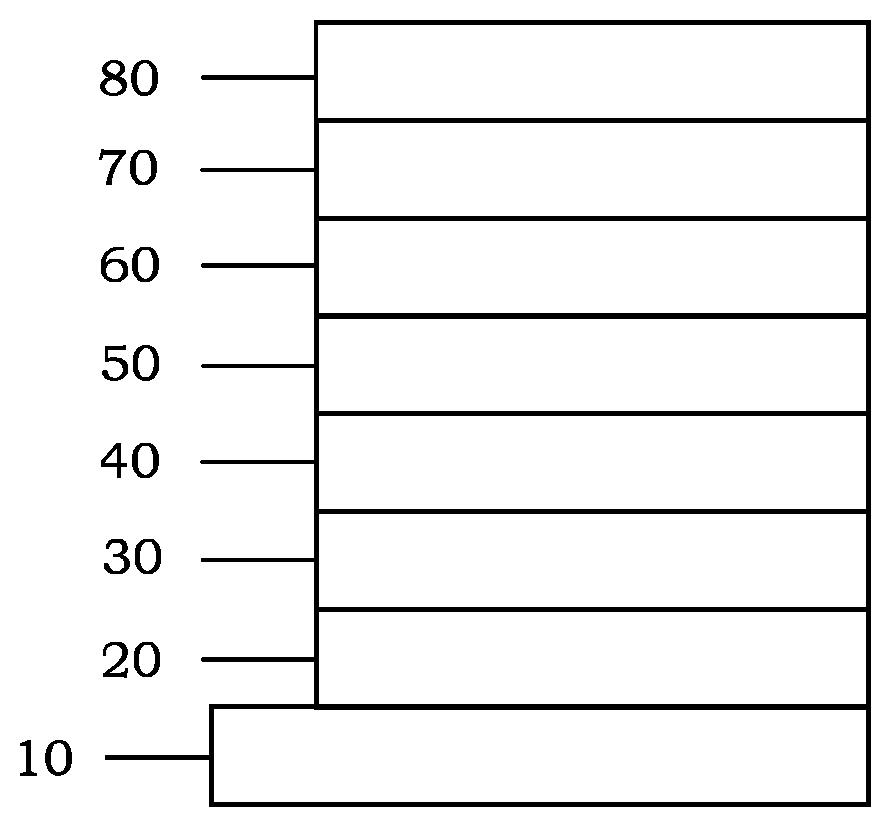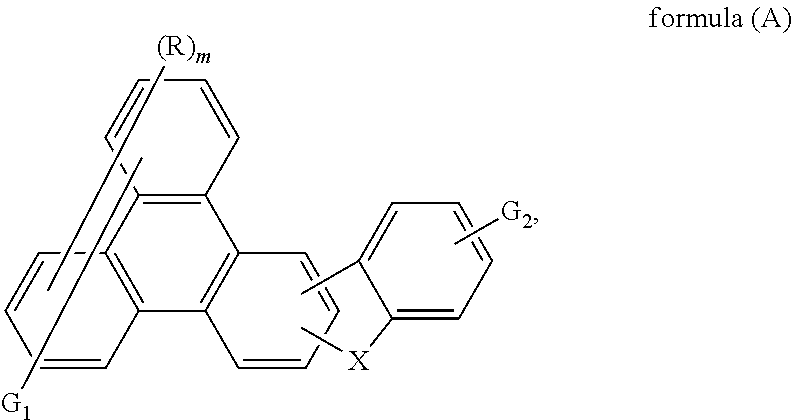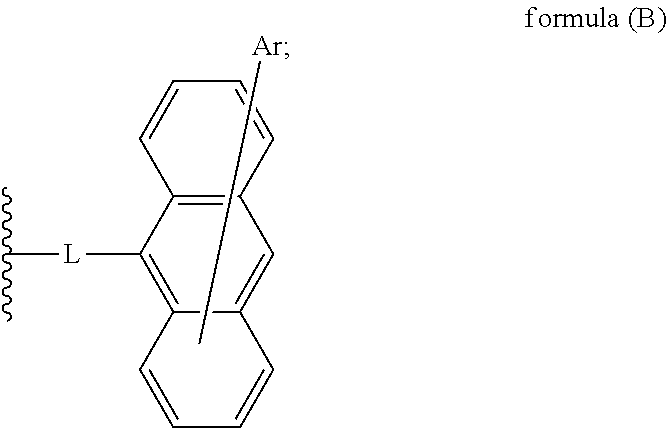Organic compound and organic electroluminescence device using the same
a technology of organic el and electroluminescence device, which is applied in the field of organic compounds, can solve the problems of driving voltage, current efficiency, and half-life of organic materials used in organic el devices, and achieve the effects of improving current efficiency, power consumption, and life time of the devi
- Summary
- Abstract
- Description
- Claims
- Application Information
AI Technical Summary
Benefits of technology
Problems solved by technology
Method used
Image
Examples
example 1
[0021]Synthesis of 2-([1,1′-biphenyl]-2-yl)-8-bromodibenzo[b,d]furan
[0022]A mixture of 10 g (30.7 mmol) of 2,8-dibromodibenzo[b,d]furan, 6.07 g (30.7 mmol) of [1,1′-biphenyl]-2-ylboronic acid, 0.35 g (0.3 mmol) of Pd(Ph3)4, 30.7 ml of 2M Na2CO3, 80 ml of EtOH and 160 ml of toluene was degassed and placed under nitrogen, and then heated to reflux for 12 hrs. After the reaction finished, the mixture was allowed to cool to room temperature. Subsequently, the solvent was removed under reduced pressure, and the crude product was purified by column chromatography, yielding 6.8 g of 2-([1,1′-biphenyl]-2-yl)-8-bromodibenzo[b,d]furan as white solid (55.5%). 1H NMR (CDCl3, 400 MHz): chemical shift (ppm) 8.19(s, 1H), 7.88-7.81 (m, 5H), 7.74-7.72 (s, 2H), 7.52-7.39 (m, 7H).
[0023]Synthesis of 13-bromotriphenyleno[2,3-b]benzofuran
[0024]The compound 2-([1,1′-biphenyl]-2-yl)-8-bromodibenzo[b,d]furan (6.8 g, 17 mmol) was mixed with 100 ml of CH2Cl2. To the mixture, 27.6 g of FeCl3 (170 mmol) was add...
example 2-17
[0029]We have used the same synthesis methods to get a series of intermediates and the following compounds are synthesized analogously.
Ex.Intermediate IIntermediate IIProductYield261%Compound 21359%Compound 22463%Compound 26557%Compound 31665%Compound 35758%Compound 69855%Compound 72960%Compound 951052%Compound 961154%Compound 981252%Compound 1171350%Compound 1211461%Compound 1301557%Compound 1521644%Compound 1561741%Compound 163
example 18
[0030]Synthesis of 1-bromo-2-iodo-4-methoxybenzene
[0031]A mixture of 40 g (171 mmol) of 1-iodo-3-methoxybenzene, 32 g (179 mmol) of N-bromosuccinimide, and 600 ml of DMF was degassed and placed under nitrogen, and then heated at 80° C. for 12 hrs. After the reaction finished, the mixture was allowed to cool to room temperature. Subsequently, the solvent was removed under reduced pressure, and the crude product was purified by column chromatography, yielding 45 g of 1-bromo-2-iodo-4-methoxybenzene as yellow oil (84.1%). 1H NMR (CDCl3, 400 MHz): chemical shift (ppm) 7.43 (dd, 1H), 7.35 (dd, 1H), 6.73 (dd, 1H), 3.74 (s, 3H).
[0032]Synthesis of 2-bromo-5-methoxy-1,1′-biphenyl
[0033]A mixture of 40 g (127.8 mmol) of 1-bromo-2-iodo-4-methoxybenzene, 15.6 g (127.8 mmol) of phenylboronic acid, 2.95 g (2.56 mmol) of Pd(Ph3)4, 155 ml of 2M Na2CO3, 100 ml of EtOH and 300 ml of toluene was degassed and placed under nitrogen, and then heated to reflux for 12 hrs. After the reaction finished, the m...
PUM
 Login to View More
Login to View More Abstract
Description
Claims
Application Information
 Login to View More
Login to View More - R&D
- Intellectual Property
- Life Sciences
- Materials
- Tech Scout
- Unparalleled Data Quality
- Higher Quality Content
- 60% Fewer Hallucinations
Browse by: Latest US Patents, China's latest patents, Technical Efficacy Thesaurus, Application Domain, Technology Topic, Popular Technical Reports.
© 2025 PatSnap. All rights reserved.Legal|Privacy policy|Modern Slavery Act Transparency Statement|Sitemap|About US| Contact US: help@patsnap.com



